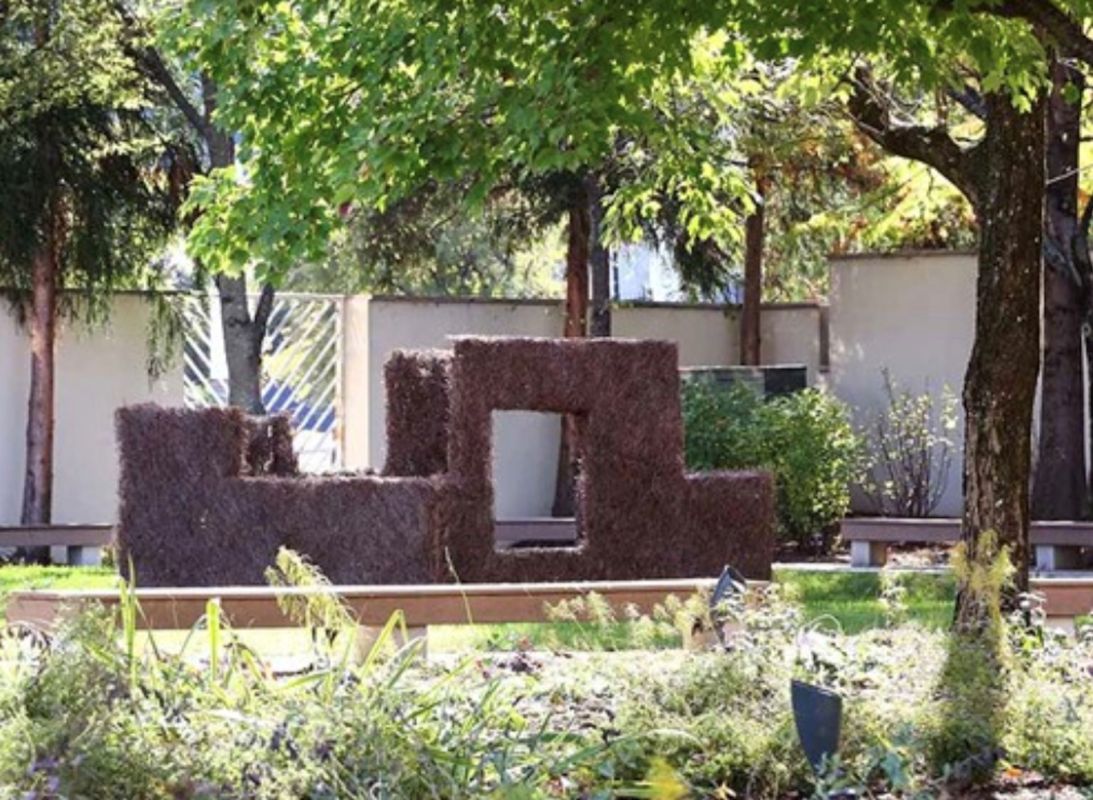After Architecture is confronting the environmental crisis with an innovative approach.
Katie MacDonald and Kyle Schumann founded the company in 2012 to address the construction industry's "impact on cultures and ecologies." They are assistant professors of architecture and directors of the Before Building Laboratory at the University of Virginia.
MacDonald focuses on reducing the environmental impact of construction by sequestering carbon in new building material systems, and Schumann is working to make digital fabrication more accessible.
The married duo put together an installation in 2020 that "proposes an alternative material ethic by making use of small-scale landscaping waste, including invasive species such as kudzu, bamboo, and various tree species, as well as forestry waste," according to a news release. Called Homegrown, it was featured at the Knoxville Museum of Art.
"Created using novel technology but physically composed of plant fibers, the installation is simultaneously primitive and high-tech," MacDonald stated.
The plant fibers were used to construct lightweight panels that formed a 10-foot-by-10-foot room. MacDonald and Schumann invented a reusable pneumatic mold to erect the structure with what they called "pillow forming," a sustainable way to design and construct endless forms repeatedly.
Homegrown critiqued wasteful building practices, with the architects asking people to consider how buildings are made, the materials used, and the potential "if these established systems and expectations can be revised."
"The process of making the two-by-four produces material waste in the forest when the tree is harvested, at the sawmill when the tree is cut into boards, and finally on site, when the board is cut to length and added to the assembly of a building," the release stated.
The use of waste — demolition accounts for 90% of the construction industry's debris — to construct a space was just one unique development among many by entrepreneurs making practical moves in the face of rising global temperatures and their associated effects.
Omar Vazquez has made similar inroads, harvesting sargassum to make bricks, which he then uses to build houses. Vazquez said it was "love at first sight" when he laid eyes on the invasive seaweed, and his company, Vivero Blue Green, is also taking a bite out of harmful carbon pollution caused by construction. According to the International Energy Agency, manufacturing of building materials accounted for about 11% of carbon pollution related to energy use in 2018.
Cement has a particularly outsized impact on air pollution and is responsible for about 7% of global heat-trapping carbon pollution.
The industry as a whole could make changes by recycling materials, using electric equipment and alternative fuels, and divesting from cement.
"Sustainable design has to be a core value. The current environmental crisis puts new strains on architecture as overextended supply chains threaten the production of conventional materials," Schumann told TONGUES in 2020. "In our work, we challenge the standardized building materials that emerged during modernism and are interested in how technological agency can help us reconcile the intentions of the designer with the irregularity of natural materials."
MacDonald and Schumann's work includes the Camp Barker Memorial in Washington, D.C., and has been highlighted at other museums. They are based in Charlottesville, Virginia.
Join our free newsletter for weekly updates on the coolest innovations improving our lives and saving our planet.









